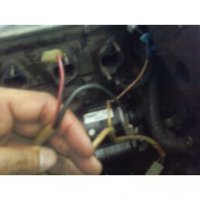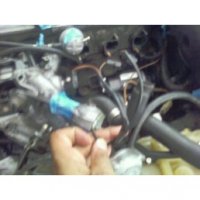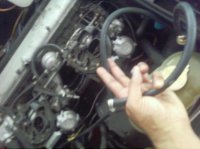GuerillaPro10
New Member
- Messages
- 8
- Reaction score
- 0
Hello everyone,
I am finishing up work that someone else started on a '73 3.0 cs. They changed the starter and cleared out all the "pluming" with out labeling what wire went where. there are two wire sets that I am confused with and was hoping someone could give me a lead as to where they should be connected.
The first set looks like two wires that go from the upper right side of the manifold to 2 relays located below the coolant res. I would assume that one of these connects to the starter.
The second is a set of 4 wires that go from that 2 relay contraption and lead to the carburetor.
any help is greatly appreciated.
I am finishing up work that someone else started on a '73 3.0 cs. They changed the starter and cleared out all the "pluming" with out labeling what wire went where. there are two wire sets that I am confused with and was hoping someone could give me a lead as to where they should be connected.
The first set looks like two wires that go from the upper right side of the manifold to 2 relays located below the coolant res. I would assume that one of these connects to the starter.
The second is a set of 4 wires that go from that 2 relay contraption and lead to the carburetor.
any help is greatly appreciated.



